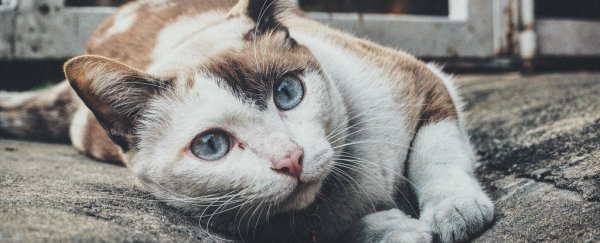One person has been infected with a rare form of bird flu after catching the virus from a shelter cat in New York City.
According to the NYC Department of Health, this is the first reported case of a human contracting H7N2 - a strain of influenza A virus - due to exposure from an infected cat. While the risk to humans is extremely low, officials advise that local cat owners be on the look-out for symptoms.
"Every time a virus adapts in a new animal, like a bird to a cat, we get concerned about the health of the cats and the humans who care for those cats," Jay Varma, deputy commissioner for disease control at the NYC Department of Health, told NPR.
The virus has infected at least 45 cats in a Manhattan animal shelter, and this increased exposure is how one of the shelter's veterinarians caught the disease.
Since last week, more than 100 cats have tested positive for H7N2 across all NYC shelters, and while the virus isn't showing signs of being easily transmitted from cats to humans, it appears to spread quickly from cat to cat.
This is not only the first time we've seen H7N2 jump from cat to human, it's also the first time we've seen it jump from bird to cat.
But the good news is this influenza A subtype is not a particularly virulent strain - the vet only experienced mild symptoms over a short period of time, and has since fully recovered.
Of the 350 people who have been screened - those working in the Manhattan shelter and those who have recently adopted cats from it - this is the only confirmed case.
The Health Department says the vet's risk of infection was particularly high due to prolonged exposure to respiratory secretions of the sick cats.
The cat that most likely introduced the virus to the Manhattan shelter has reportedly been identified, but at this stage, it's not clear how it ended up getting infected itself.
The cat was already old and frail at the time of infection, and the virus had become so severe, it had to be put down. But the remaining cats are expected to make a full recovery.
Before now, there have been two documented cases of humans being infected by H7N2 in the United States - one person monitoring an outbreak of the virus in turkeys and chickens in 2002 became infected, and there was another case from an unknown source in 2003.
This is the first reported case in humans due to exposure to an infected cat, but there have been no documented cases of human-to-human transmission, the NYC Health Department reports.
Officials say the risk of your cat being infected by H7N2 is extremely low - particularly outside New York City - as is the chance of a person catching the virus from an infected cat, so there's no need for anyone to abandon their pets in a panic.
But if you are concerned, the signs to watch out for in your cat include sneezing, coughing, fever, loss of appetite, and discharge from the nose or eyes.
To keep yourself extra safe from infection, the NYC Health Department advises:
"[D]o not allow your sick animal to kiss or lick your face, and it is advisable not to cuddle with your cat if it has a flu-like illness. These precautions are even more important for persons with compromised immune systems, such as those who are being treated for cancer, or who have other chronic health conditions such as diabetes, heart disease, liver disease, or kidney disease."
Testing has been done on dogs and rabbits in New York shelters, and all results have been negative for H7N2.
Health officials are continuing their investigation to ensure that no human cases have gone undetected, and researchers will now be looking into how the strain adapted to its new hosts.
"Our investigation confirms that the risk to human health from H7N2 is low, but we are urging New Yorkers who have adopted cats from a shelter or rescue group within the past three weeks to be alert for symptoms in their pets," said Health Commissioner Mary T. Bassett.
"We are contacting people who may have been exposed and offering testing as appropriate."
